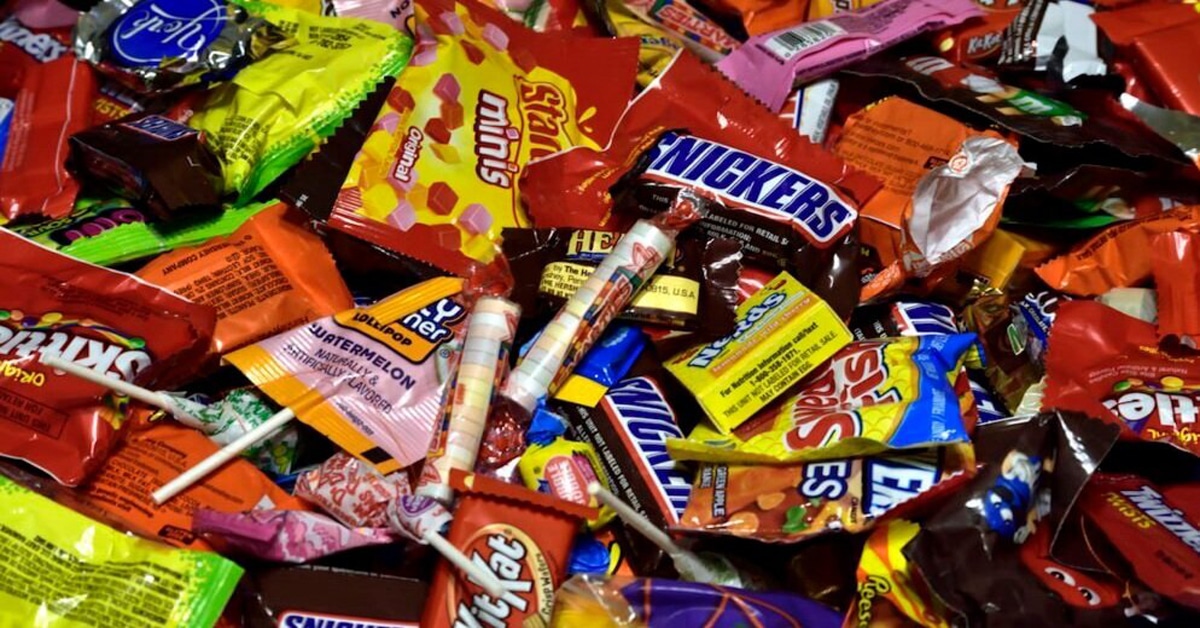Candy Wrappers
What do you see first when you’re standing in front of the shelf full of different chocolate brands? It’s the candy wrappers that catch our attention before we even taste what’s inside.
As the chocolate industry started to develop and the recipes for creating many new candies began to emerge during the European industrial revolution, candy manufacturers realized that some improvements were necessary. Chocolate was very expensive, and they needed a way to protect some of their ingredients from outside influences like heat.
Please leave a review or any memories of this snack in the comments at the bottom of this page. Thank you!
Many governments throughout the world regulate rules about candy transportation, safe preservation, and many other things related to candy wrappers. The majority of famous candies we know and love today have gone through a few candy wrappers design changes over the years. Here are some of your favorite candy bars with their wrapper developments.
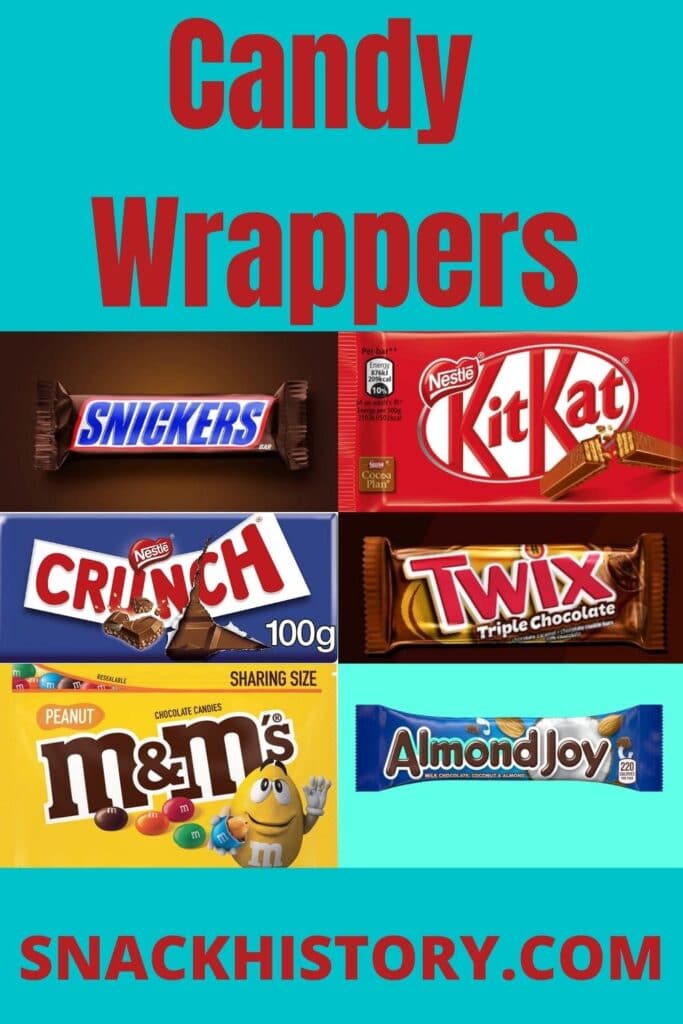
Top 10 Most Popular Candy Wrappers
1. Nickel Bar
One of the most important moments in the chocolate development process was creating its wrapper. In 1890, the “nickel bar” was introduced with its glossy white paper, gold-colored text, and a picture of a cow on it.
This chocolate bar was created by Milton S. Hershey and it became an instant success, as it was the first chocolate that was finally equally available to everyone. Years went by and the appearance of the “Nickel bar” became the starting point for many others. Manufacturers produce more and more chocolate with colorful and interesting wrappers.
The purpose wasn’t only to preserve the candy safely anymore, but the candy wrappers became one of the most effective ways of communicating with customers.
2. Snickers
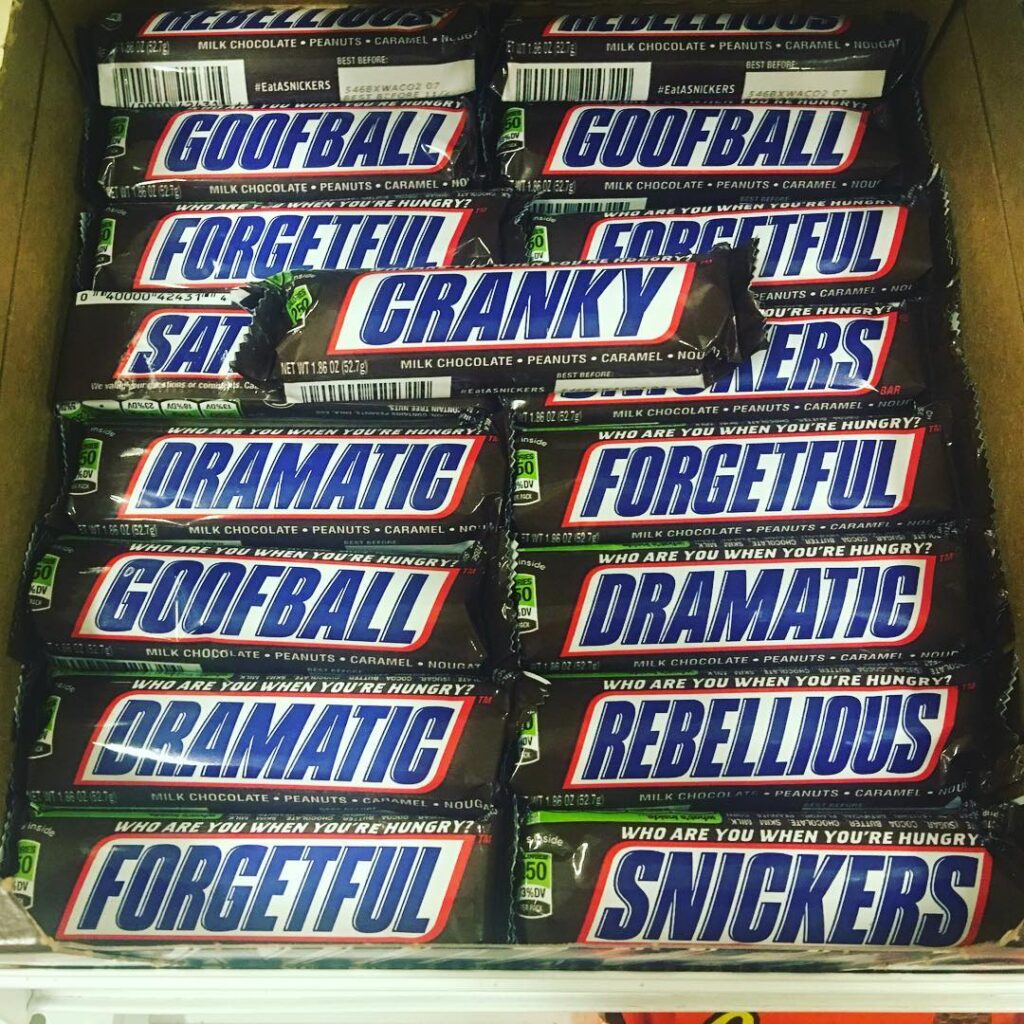
You can barely find a person today who has never eaten Snickers. With strong marketing campaigns, they have earned their deserved place in the chocolate industry, and now their wrapping is very familiar to us, making us nostalgic for our childhood memories.
When we see its packaging, we already know what to expect from the candy. Even though the Snickers wrapper has undergone quite a makeover, the wrapping still has elements of the original one.
This peanut, caramel, and nougat creation now comes in more varieties, and its famous plastic candy wrappers take care of it so it can be served properly to us with its white, orange, and blue color scheme.
3. Reese’s peanut butter cups
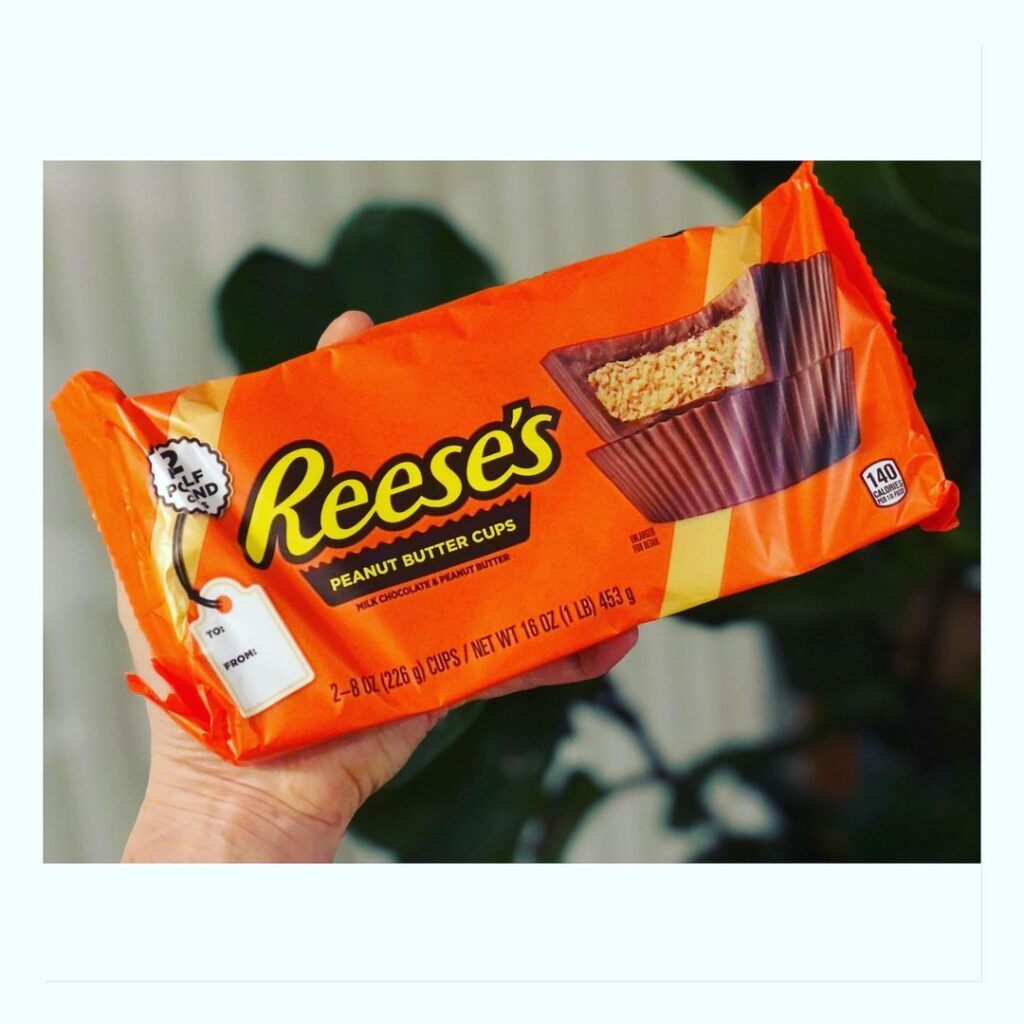
H.B. Reese worked for Hershey before he launched his line of chocolates and became famous for its Reese’s peanut butter cups. They required less sugar than his other confections and were simpler to eat, and their convenient packing made them even more famous.
Nowadays, Reese’s comes in a plastic orange wrapper with the yellow-colored “Reese’s” on it. But since it’s one of the most famous candies, it has many variations of candy wrappers. For example, the “mini” cups come in various bag sizes and foil colors for seasonal themes like red, gold, and green for the Christmas holiday season.
4. Kit Kat
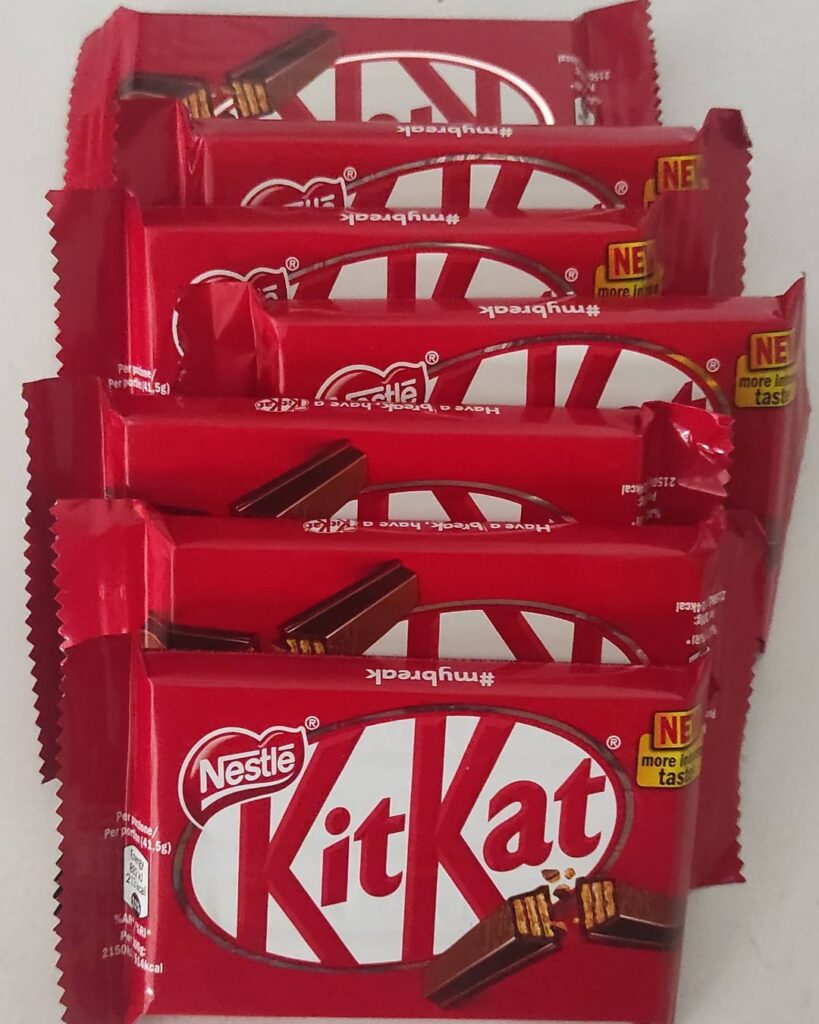
This amazing candy was born in the United Kingdom and has spread around the globe. Kit Kat was created in 1935, and it had a different name in the beginning. Kit Kat wrappers are one of those candy wrappers that we can recognize with our eyes closed, with their plastic red and white packaging.
Kit Kat manufacturer and food and drink giant Nestlé announced that it had decided to exclusively issue 100% recyclable packaging, which will now be wrapped in paper instead of plastic. That’s good news since plastic packaging is non-recyclable and we need to replace it as soon as possible.
5. Butterfinger
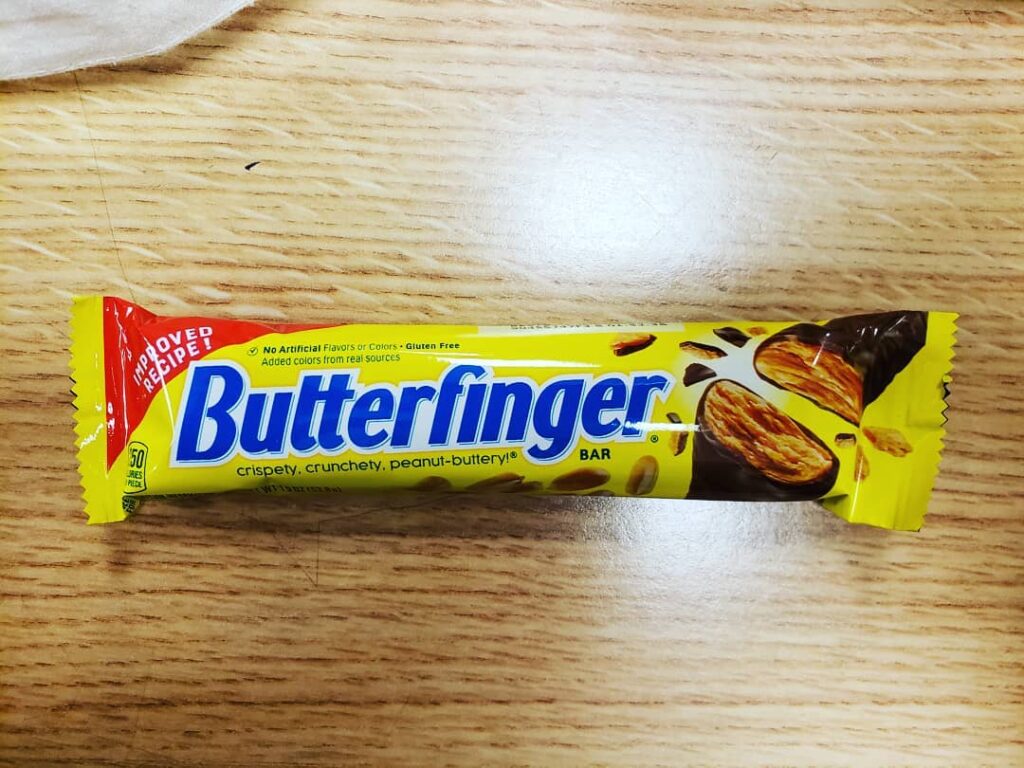
Butterfinger is widely known for its publicity stunts, since they’ve aired many commercials, and you probably already know how its wrapper looks. This is another famous candy bar that we all love and crave.
Interestingly, Butterfinger was named in a public contest, and it has stayed loyal to its original packaging color scheme. Butterfinger’s wrapper is made from plastic, and most of it is yellow, with “Butterfinger” written on it in blue.
6. 3 Musketeers
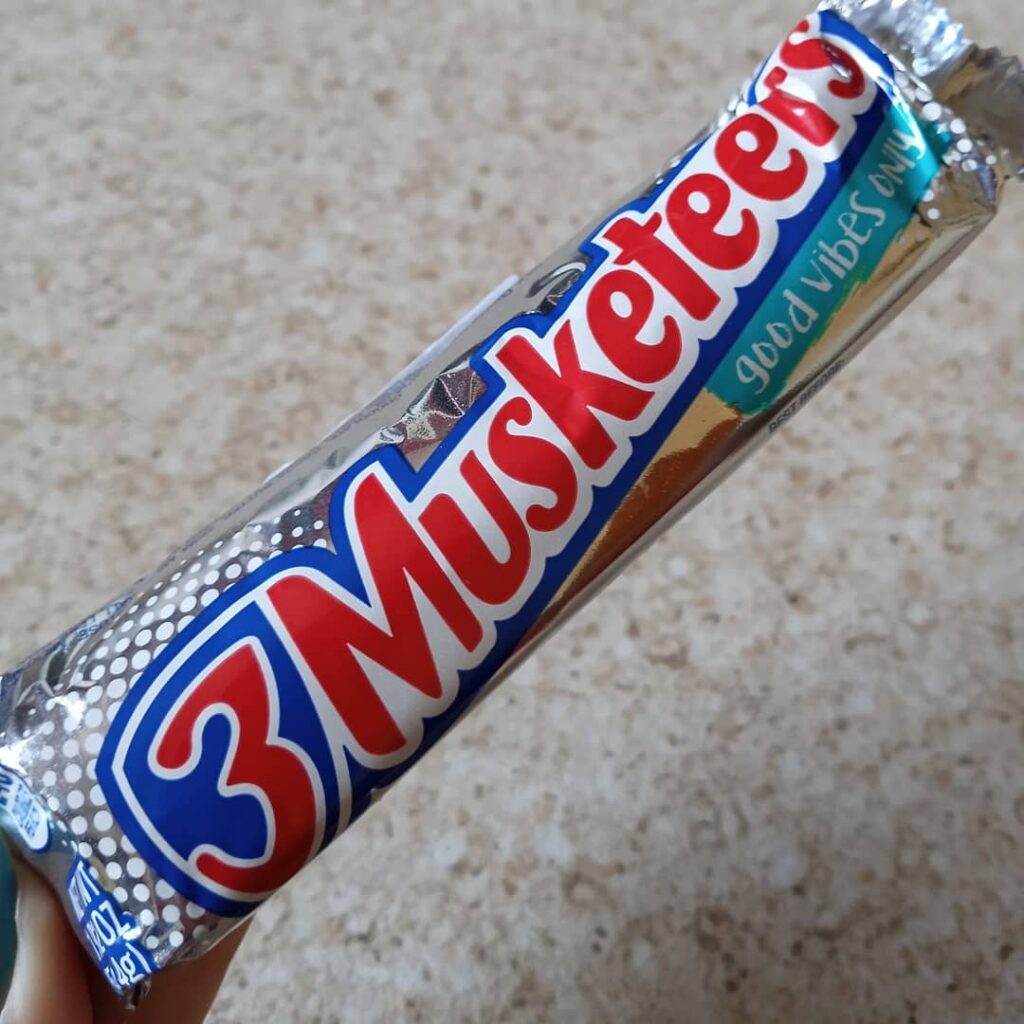
Have you ever wondered why the candy is named “3 Musketeers“? Once the name was relevant to what was inside it, there were three bars in one pack, including chocolate, strawberry, and vanilla, when it was invented in 1932, but then the vanilla and strawberry nougat became too expensive to produce, and only chocolate was left.
In the beginning, the 3 Musketeers had wrappers in white, blue, and red. Now white has changed to silver packaging and “3 Musketeers” is written in red that has a blue stroke. Like many other candies, they use plastic candy wrappers.
7. Nestle’s Crunch
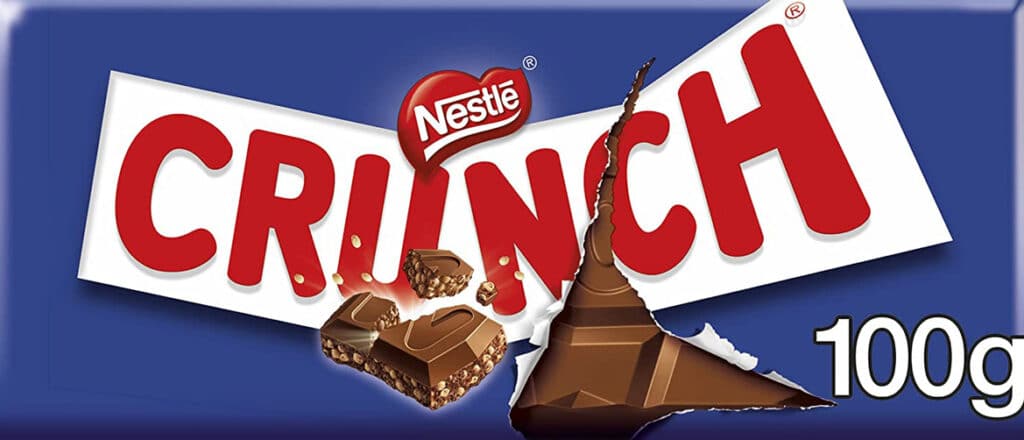
This incredible candy hit shelves in 1938 and was originally sold as “Nestlé’s Crunch Bar,” a milk chocolate bar with crisped rice. If this crunchy candy is your favorite, then you should know that it is one of those few candies that stayed loyal to their first looks.
Nestle Crunch’s packaging still has similar colors to the original one, but a mix of three colors: blue, white, and red would totally catch your attention at a store, so don’t miss this crispy opportunity!
8. Almond Joy
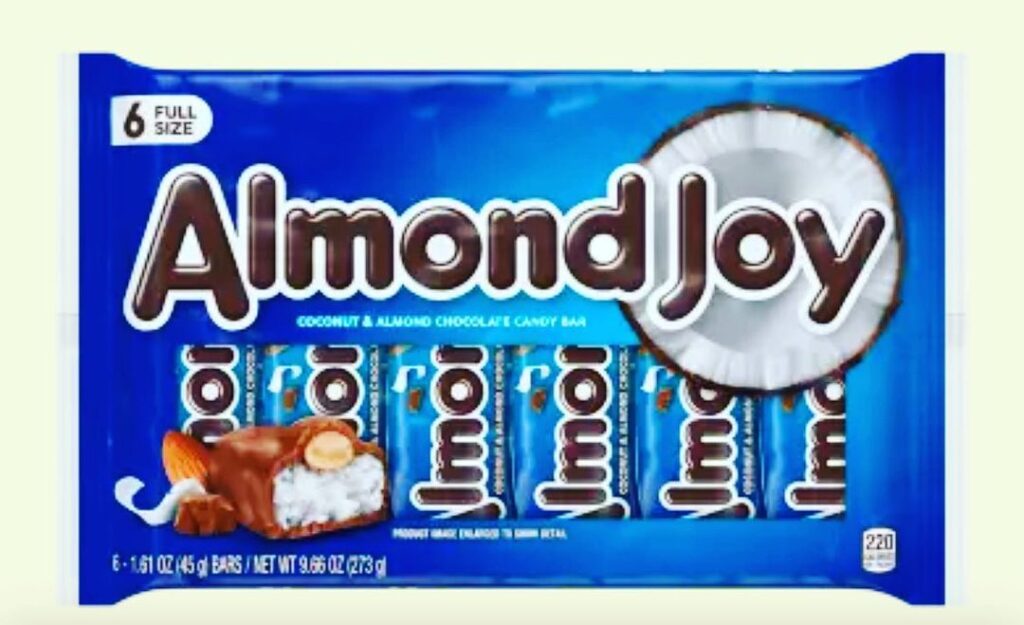
The coconut bar created by Peter Paul has gradually become more tropical in appearance. In 1946, the Almond Joy was introduced as a substitute for the company’s discontinued candy “Dream Bar.”
In the beginning, the Almond Joy wrapper had gotten quite a makeover. In the beginning, it had a light-colored package with reddish or orange thick lines on it, and the inventor’s, Peter Paul’s, name was written above the name of the candy. The wrappers changed quite a bit after that and were finally re-branded in 2015. The candy wrapper is now in blue, white, and brown, with coconut and almonds printed on it.
9. M&Ms
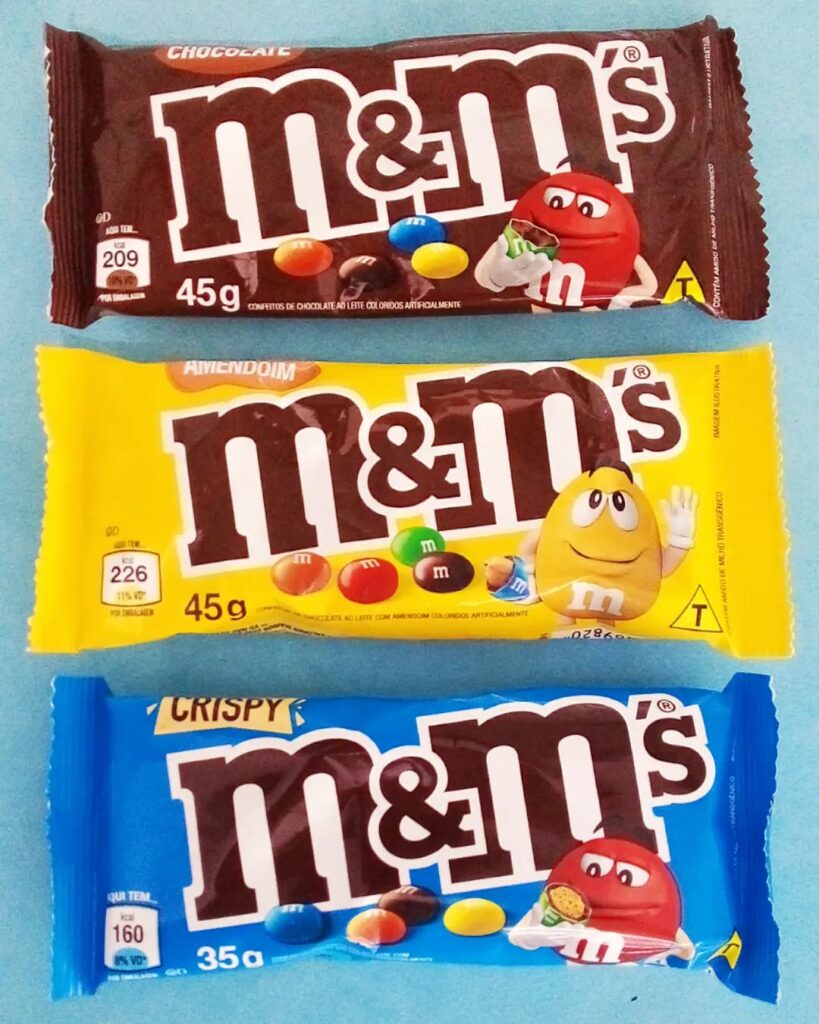
The first M&Ms was distributed to members of the US military and the general public. It was finally introduced in 1945. Soon after, M&Ms began printing their “M”s on each candy wrapper to gain brand recognition, and it worked successfully since we all know what it looks and tastes like.
If you remember the commercials for M&M’s you must know their main advantage compared to competitors: M&M’s don’t melt in the heat! But it still needed a wrapper.
As you already know, M&Ms come in a wide range of colors and flavors. M&M’s colors have changed several times throughout the years, with only brown, yellow, and green candies remaining. Besides, the original wrapper also changed quite a bit, and as a result, today we got two candy wrappers: one in yellow and brown with M&Ms’ sign and the other with their famous M&Ms’ boys on it.
10. Twix
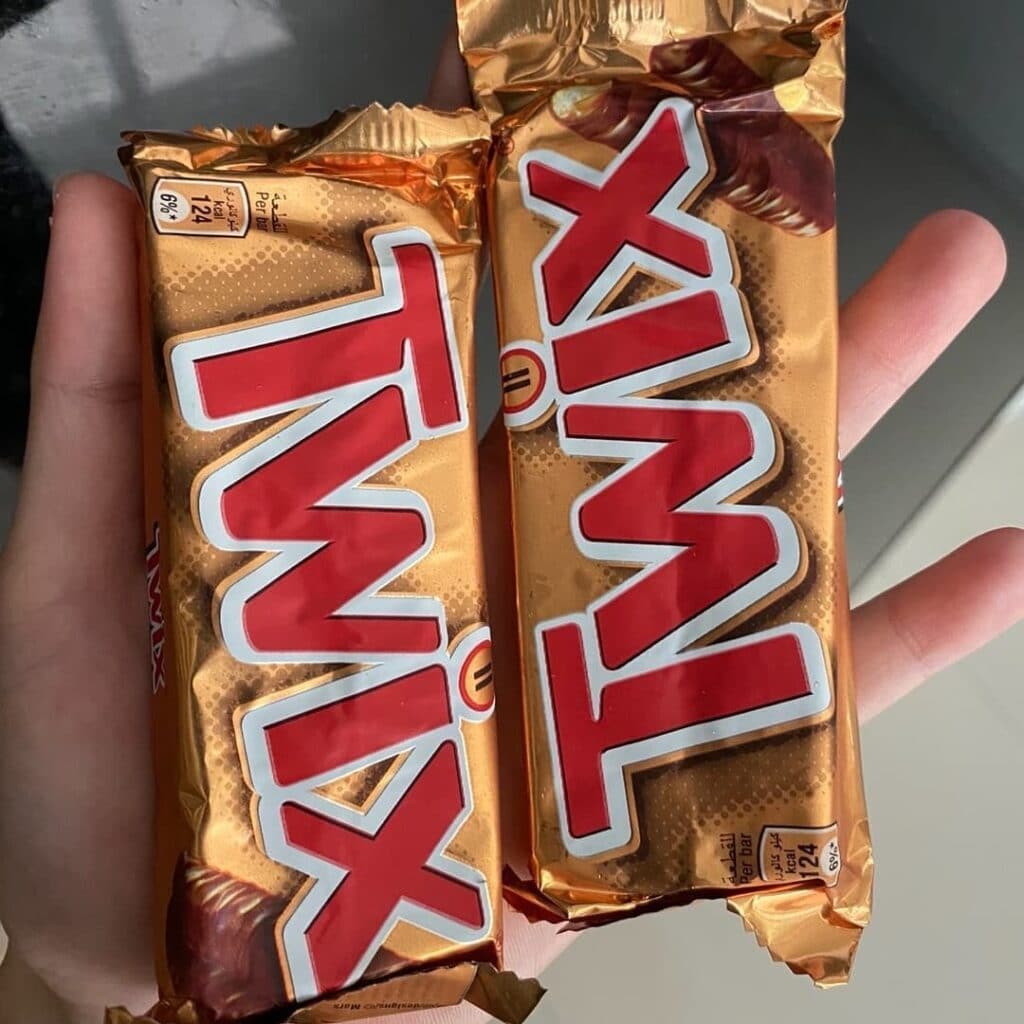
No need to explain, but still. Twix is a caramel chocolate bar made by Mars, Inc. It consists of a biscuit that is covered in other confectionery toppings and coatings. Twix hit our shores in 1979, and since then, the candy wrapper hasn’t changed much.
It has a plastic, golden-colored wrapper with red and white “Twix” on it. The design makes it stand out from other candy wrappers, and so does the incredible taste. Next time you see this beauty, don’t miss a chance to enjoy both the look of the wrapper and the taste.
Truth About Candy Wrappers – Why Are They That Important?
Have you ever wondered what makes candy wrappers so important and interesting to the customers? Well, there are a few crucial reasons why all the candies should be preserved safely in their wrappers. Let’s find out the truth about candy wrappers!
Preservation
First of all, they protect the candy from outside influences, such as microbes, heat, flies, and many other dangerous things. For example, while shopping, people love to touch things unpredictably, and candy wrappers take care to preserve the candy untouched.
Candy Wrappers as Marketing Tools – Rom Case
If you have noticed, on every candy wrapper, the first thing you see is the candy name, which is also their logo. The wrapper is a very powerful marketing and advertising tool that attracts users in many innovative ways.
How strong is the marketing power of the candy wrappers? Well, have you heard about the Romanian chocolate bar Rom? Actually, people often refer to it as a chocolate bar that came back from the dead. The wrapper of the candy is in the colors of the Romanian flag, but even though Rom Candy is a symbol of the country, people were still buying other candies from America.
As a sign of his dissatisfaction, Rom started a campaign – the American Rom, changing its packaging into the American flag, and as a result, people started to protest. Nobody liked the idea of turning national candy into American candy. Seeing the American flag as your country’s symbol isn’t something to be proud of.
Soon after, Rom revealed that it was a campaign, protesting people’s choice not to buy local but foreign products, and it worked! Rom is now the most popular chocolate bar in Romania.
Bottom Line
Candy wrappers are strong marketing and hygienic tools for brands. They are made from different materials, including aluminum, paper, plastic, and so on, which makes it hard and expensive for facilities to turn them into useful materials and recycle them.
Especially when we talk about plastic. They are not generated in high volumes, it’s difficult to reuse them, and it is a big ecological problem. Hopefully, there is a tendency to find a better way to make candy wrappers, and we have left nothing else but to hope it will work!
Is there anything else we can do? Yes! When possible, try to buy candy packaged in recyclable materials. Which candy wrappers do you fondly recall? What is your favorite?

Nato is a content writer and researcher with a background in psychology. She’s passionate about writing about the candy industry and exploring the cultural significance of sweets and treats. She believes that the stories behind our favorite snacks can reveal a great deal about our values.
Please leave a review or any memories of this snack in the comments below. Thank you!
Click here for a full A-Z list of Snacks and Candy
